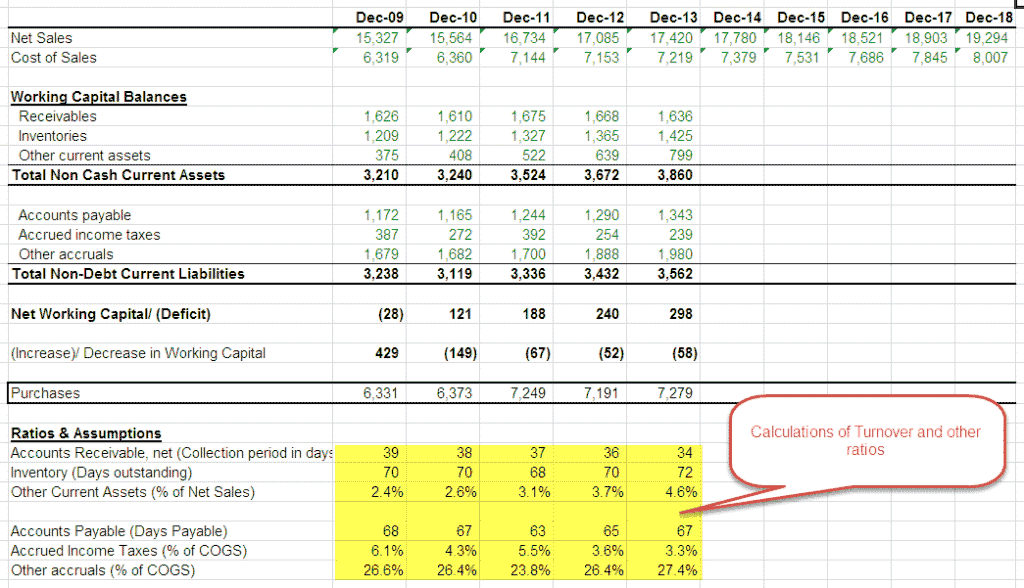
Current assets are economic benefits that the company expects to receive within the next 12 months. The company has a claim or right to receive the financial benefit, and calculating working capital poses the hypothetical situation of liquidating all items below into cash. The point is to challenge yourself with questions about how you will achieve your projected results.
A more efficient and agile approach to cash flow forecasting

Examples of current liabilities include accounts payable, short-term debt payments, or the current portion of deferred revenue. It’s a commonly used measurement to gauge the short-term financial health and efficiency of an organization. Net working capital includes the total current assets and liabilities of a company.
What is Working Capital Forecasting?
- In the United States, Deloitte refers to one or more of the US member firms of DTTL, their related entities that operate using the “Deloitte” name in the United States and their respective affiliates.
- In addition to the ratios discussed above, companies may rely on the working capital cycle when managing working capital.
- Banks often incorporate a debt-to-EBITDA target within debt covenants, so this metric can be a helpful sanity check to your assumptions.
- While balance sheet forecasts are super helpful for looking at future company performance, it’s important to bear in mind that they are forecasts.
- At the end of the day, having completed a sale does not matter if the company is unable to collect payment on the sale.
However, a short period of negative working capital may not be an issue depending on the company’s stage in its business life cycle and its ability to generate cash quickly. Small businesses may wish to forecast their income statement, balance sheet and cash flow statement to project the future financial health of the company. This information helps businesses identify potential bottlenecks in their cash flow and take proactive measures to address them. By estimating the assets, equity, and liabilities at a specific point in the future, companies can make informed decisions about their capital, debt, and other financial aspects. This forecasting process is typically conducted using historical data and financial software to project the future state of the balance sheet. However, what if both companies’ current liabilities have an average payment period of 30 days?
Deferred tax assets and liabilities
Maintaining a balance sheet forecast requires projecting net working capital accurately, which reflects the company’s short-term financial health. Furthermore, major one-off events that impact cash, such as funding rounds or significant cash outlays, are incorporated into the balance sheet forecast using event-based planning. This enables businesses to account for these events and provides visibility into their cash balance. A balance sheet is a financial statement that provides a snapshot of a company’s financial position at a particular point in time.
Methods of Forecasting Working Capital
Projecting capital expenditures using growth rates can be appropriate for companies that are not as capital intensive. For example, a consulting firm may have computers, desks, printers, and office space. In this case, a growth rate might be the better way to estimate future capital expenditures. For many companies and situations, the most effective way to forecast forecast working capital cash and the balance sheet is a hybrid approach combined with advanced analytics capabilities. A more likely scenario is that you have strategic plans in place for future growth, which are going to impact what your balance sheet looks like. One of the biggest benefits of balance sheet forecasting is the ability to understand your net working capital.
In other words, the more items a company produces and sells, the more maintenance will be required on its assets. Therefore, you may estimate future maintenance expenditures as a percentage of revenue. When we develop projected balance sheet information for clients, we always review our estimations with the client to confirm that it aligns with their general expectations.
As that bottom line improves, working capital management can simply enhance the company’s position. It does not address the long-term financial health of the company and may sacrifice the best long-term solution in favor of short-term benefits. Companies primarily consider inventory during working capital management as it may be the most risky aspect of managing capital. When inventory is sold, a company must go to the market and rely on consumer preferences to convert inventory to cash. Because cash is always considered a current asset, all accounts should be considered. The forecast can be generated from a model, with growth rates, new customers and assumptions showing the revenue story in a Profit and Loss account.
However, this one needs to look forward, not backwards, as you hold stocks based on what you are going to sell, not what went out the door already. For many businesses, this is a big number on the Balance Sheet, and counts towards a big working capital commitment. My colleague Alex Mumford has previously explained the relationship between working capital and cash. A growing company should play working capital dynamics to its advantage, and a good model will help to understand the possible impact.



